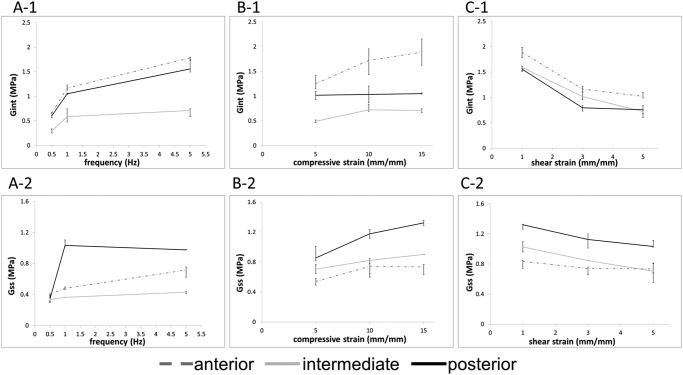Figure 2.
Changes in shear modulus with frequency, compressive strain, and shear strain. Mean values of the instantaneous (1) and steady-state (2) shear moduli as a function of frequency, with γ = 1% and ϵ = 10% (A), compressive displacement, F = 1 Hz, and γ = 1% (B), or shear displacement, ϵ = 10% and F = 1 Hz (C). Samples were shear-strained in the anterior to posterior direction for all data presented. Increases in frequency and compressive strain caused shear stiffening, and the application of greater shear strain induced the shear modulus to become more elastic in the anterior and intermediate regions of the disc. Error bars represent standard deviations.

